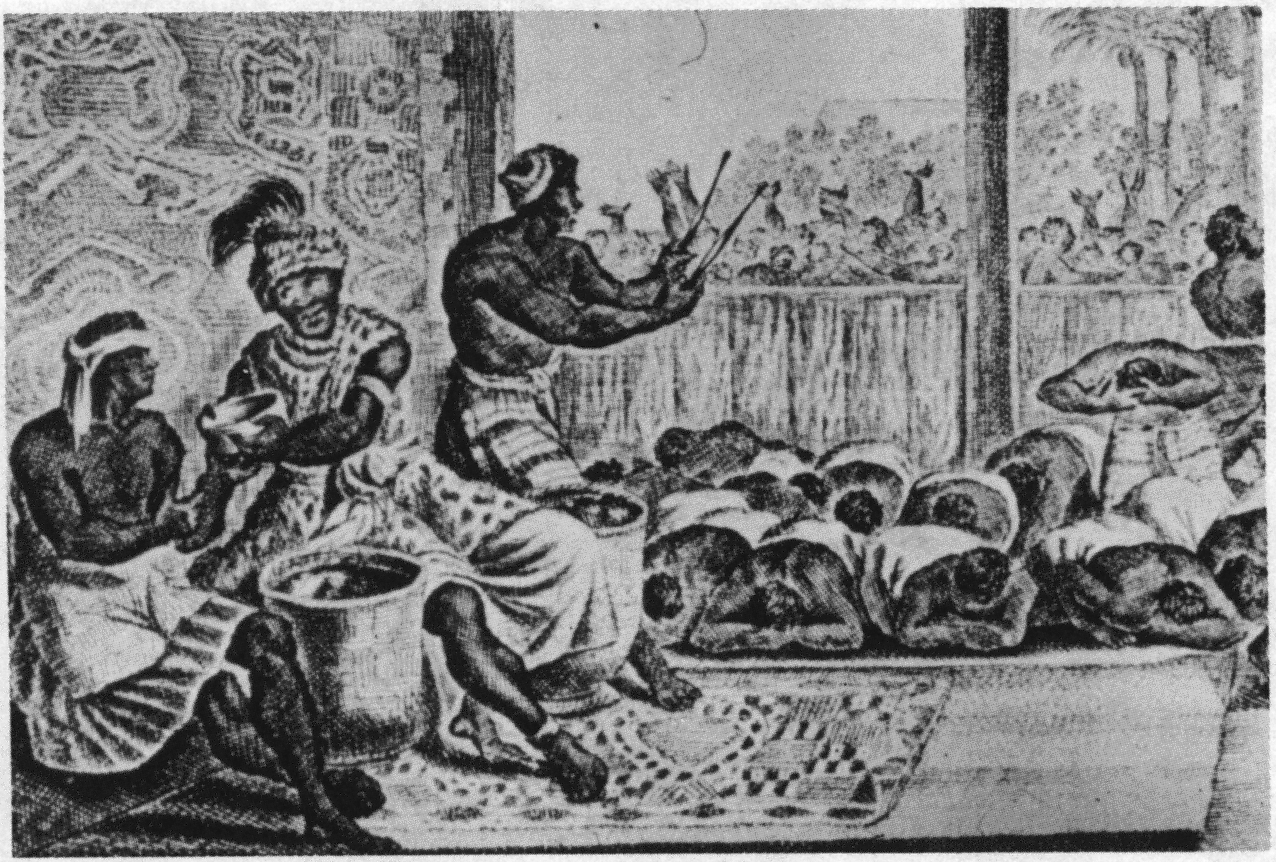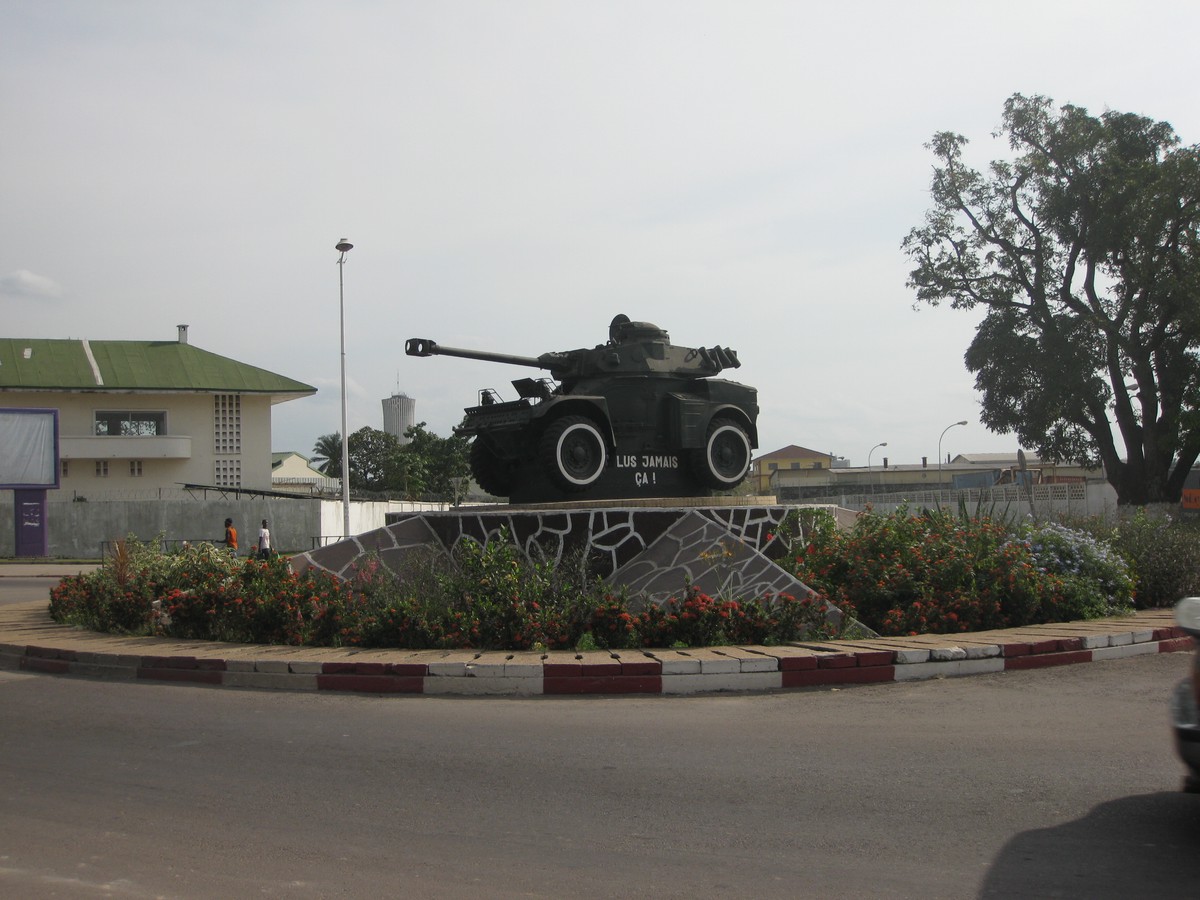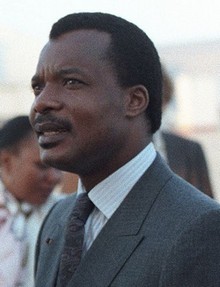|
Bernard Kolélas
Bernard Bakana Kolélas (12 June 1933Alain Kounzilat, , Kimpwanza (planeteafrique.com) . – 13 November 2009Thierry Noungou"Parlement - Bernard Bakana Kolélas décédé ce 13 novembre à Paris", ''Les Dépêches de Brazzaville'', 13 November 2009 .) was a Republic of the Congo, Congolese politician and President of the Congolese Movement for Democracy and Integral Development (MCDDI). Kolélas was a long-time opponent of the single-party rule of the Congolese Labour Party (PCT), and after the introduction of multiparty politics in the early 1990s he was one of Congo-Brazzaville's most important political leaders. He placed second in the 1992 Republic of the Congo presidential election, August 1992 presidential election, behind Pascal Lissouba; subsequently he was List of mayors of Brazzaville, mayor of Brazzaville, the capital, during the mid-1990s, and he briefly served as Prime Minister of Congo-Brazzaville during the Republic of the Congo Civil War (1997-99), 1997 civil war. ... [...More Info...] [...Related Items...] OR: [Wikipedia] [Google] [Baidu] |
Republic Of The Congo
The Republic of the Congo, also known as Congo-Brazzaville, the Congo Republic or simply the Congo (the last ambiguously also referring to the neighbouring Democratic Republic of the Congo), is a country located on the western coast of Central Africa to the west of the Congo River. It is bordered to the west by Gabon, to the northwest by Cameroon, to the northeast by the Central African Republic, to the southeast by the Democratic Republic of the Congo, to the south by the Angolan exclave of Cabinda Province, Cabinda, and to the southwest by the Atlantic Ocean. The region was dominated by Bantu peoples, Bantu-speaking tribes at least 3,000 years ago, who built trade links leading into the Congo River basin. From the 13th century, the present-day territory was dominated by a confederation led by Vungu which included Kakongo and Ngoyo. Kingdom of Loango, Loango emerged in the 16th century. In the late 19th century France colonised the region and incorporated it into French Equato ... [...More Info...] [...Related Items...] OR: [Wikipedia] [Google] [Baidu] |
Democratic Republic Of The Congo
The Democratic Republic of the Congo (DRC), also known as the DR Congo, Congo-Kinshasa, or simply the Congo (the last ambiguously also referring to the neighbouring Republic of the Congo), is a country in Central Africa. By land area, it is the List of African countries by area, second-largest country in Africa and the List of countries and dependencies by area, 11th-largest in the world. With a population of around 112 million, the DR Congo is the most populous nominally List of countries and territories where French is an official language, Francophone country in the world. Belgian French, French is the official and most widely spoken language, though there are Languages of the Democratic Republic of the Congo, over 200 indigenous languages. The national capital and largest city is Kinshasa, which is also the economic center. The country is bordered by the Republic of the Congo, the Cabinda Province, Cabinda exclave of Angola, and the South Atlantic Ocean to the west; the Cen ... [...More Info...] [...Related Items...] OR: [Wikipedia] [Google] [Baidu] |
Government Of National Unity
A national unity government, government of national unity (GNU), or national union government is a broad coalition government consisting of all parties (or all major parties) in the legislature, usually formed during a time of war or other national emergency. A unity government according to the principles of consensus democracy lacks opposition, or opposition parties are too small and negligible. By country Afghanistan Following the disputed 2014 presidential elections, a National Unity Government (NUG) between both run-off candidates was formed with Ashraf Ghani as President of Afghanistan and Abdullah Abdullah in the new office of Chief Executive of Afghanistan. This power-sharing agreement broke apart after the 2019 Afghan presidential election, after which Ghani abolished the office of Chief Executive while Abdullah again refused to recognize Ghani's presidency and demanded the formation of a new government in northern Afghanistan. Both politicians lost power after the Ta ... [...More Info...] [...Related Items...] OR: [Wikipedia] [Google] [Baidu] |
Republic Of The Congo Civil War (1997–1999)
The Second Republic of the Congo Civil War, also known as the Second Brazzaville-Congolese Civil War, was the second of two ethnopolitical civil conflicts in the Republic of the Congo which lasted from 5 June 1997 to 29 December 1999. The war served as the continuation of the civil war of 1993–1994 and involved militias representing three political candidates. The conflict ended following the intervention of the Angolan military, which reinstated former president Denis Sassou Nguesso to power. Background The Republic of the Congo (Congo-Brazzaville) gained its independence from France in 1960, and soon entered a period of political turbulence. Following a three-day uprising in 1963, the Congo fell under the influence of scientific socialism, establishing relations with the Eastern Bloc and becoming a single-party People's Republic. Two regime changes took place as the country faced a rise in ethnic tensions, with Denis Sassou Nguesso assuming presidency in 1979. In 1990, t ... [...More Info...] [...Related Items...] OR: [Wikipedia] [Google] [Baidu] |
Ninja (militia)
The Ninjas were a militia in the Republic of the Congo, which participated in numerous wars and insurgencies in the 1990s and 2000s. The Ninjas were formed by the politician Bernard Kolélas in the early 1990s and were commanded by Frédéric Bintsamou, alias Pastor Ntoumi, when Kolelas was in exile. The militia fought the supporters of President Pascal Lissouba in the 1993–94 Civil War. In the 1997–99 Civil War, they allied with Lissouba's forces against the supporters of former President Denis Sassou Nguesso. After Sassou Nguesso's victory in this Civil War, Ntoumi's Ninjas fought an insurgency against his government in the Pool Department. The conflict in the Pool escalated in a series of violent clashes in 2002-03, after which the Ninja leadership eventually gave up their armed struggle. Ntoumi announced the disbanding of the Ninjas in 2008 but they resurfaced in 2016, starting the Pool War. Character and ideology Formed by and originally loyal to Bernard Kolélas, th ... [...More Info...] [...Related Items...] OR: [Wikipedia] [Google] [Baidu] |
1993 Republic Of The Congo Parliamentary Election
Parliamentary elections were held in the Republic of the Congo on 2 May 1993, with a second round in several constituencies on 6 June. The result was a victory for the Presidential Tendency coalition, which won 65 of the 125 seats in the National Assembly. African Elections Database Former President Joachim Yhombi-Opango
Jacques Joachim Yhombi-Opango (12 January 1939 – 30 March 2020) was a Congolese politician. He was an army officer who became Congo-Brazzaville's first general and served as Head of State of the People's Republic of the Congo from 1977 to 197 ... was appointed as Prime Minister.
Results ...[...More Info...] [...Related Items...] OR: [Wikipedia] [Google] [Baidu] |
Union For Democratic Renewal (Congo)
The Union for Democratic Renewal (''Union pour la Renouveau Démocratique'') was a coalition of political parties in the Republic of the Congo. The coalition was led by Bernard Kolélas, who was also the leader of the coalition's largest party, the Congolese Movement for Democracy and Integral Development (MCDDI). The URD parties supported the transitional government of Prime Minister André Milongo (1991–1992) and opposed the National Alliance for Democracy (AND), which included the Pan-African Union for Social Democracy (UPADS) and the Congolese Labour Party (PCT). In the parliamentary election held in June–July 1992, the AND parties won a slight majority of seats in the National Assembly and UPADS leader Pascal Lissouba was victorious over Kolélas in the August 1992 presidential election.John F. Clark, "Congo: Transition and the Struggle to Consolidate", in ''Political Reform in Francophone Africa'' (1997), ed. John F. Clark and David E. Gardinier, pages 71&ndash ... [...More Info...] [...Related Items...] OR: [Wikipedia] [Google] [Baidu] |
Kouilou Region
Kouilou ( ) is a department of the Republic of the Congo. Covering the country's coastline, it has an area of 13,650 square kilometres and at the start of 2023 it was home to about 97,362 people. The department borders Niari Department, the commune of Pointe-Noire, and internationally, Gabon and the Cabinda area of Angola Angola, officially the Republic of Angola, is a country on the west-Central Africa, central coast of Southern Africa. It is the second-largest Portuguese-speaking world, Portuguese-speaking (Lusophone) country in both total area and List of c .... Since 2011 the town of Loango has been the capital of the Kouilou department. Before, the capital was Hinda (see "Villages and towns" part). ''Kouilou'' is also the name of a river, the Kouilou-Niari River. Administrative divisions Kouilou Department is divided into six districts: Districts # Hinda District # Madingo-Kayes District # Mvouti District # Kakamoeka District # Nzambi District # L ... [...More Info...] [...Related Items...] OR: [Wikipedia] [Google] [Baidu] |
Pan-African Union For Social Democracy
The Pan-African Union for Social Democracy (, UPADS) is a political party in the Republic of the Congo headed by Pascal Lissouba, who was President from 1992 to 1997. It has been the country's main opposition party since Lissouba's ouster in 1997. Pascal Tsaty-Mabiala has been Secretary-General of UPADS since 2006. History In the 1991–1992 transition to multiparty elections, UPADS was part of the National Alliance for Democracy (AND), which also included the Congolese Labour Party (PCT).John F. Clark, "Congo: Transition and the Struggle to Consolidate", in ''Political Reform in Francophone Africa'' (1997), ed. John F. Clark and David E. Gardinier, pages 71–72. In the parliamentary election held in June–July 1992, UPADS won 39 out of the 125 seatsIPU PARLINE page on 1992 parliamentary electio ... [...More Info...] [...Related Items...] OR: [Wikipedia] [Google] [Baidu] |
Goma Tsé-Tsé
Goma is a city in the eastern Democratic Republic of the Congo. It is the capital and largest city of the North Kivu Province; it is located on the northern shore of Lake Kivu and shares borders with the Bukumu Chiefdom to the north, Rwanda to the east and the Masisi Territory to the west. The city lies in the Albertine Rift, the western branch of the East African Rift, and is only south of the active volcano Mount Nyiragongo. With an approximate area of , the city had a population of 782,000 people in 2024, with an additional 500,000 displaced people. Goma is administratively divided into two urban municipalities: Goma and Karisimbi, which are further subdivided into 18 quarters, colloquially recognized as "neighborhoods" in the English lexicon. The city is home to several notable landmarks, including Goma International Airport, the UNESCO World Heritage Site Virunga National Park, the private Christian co-educational school Adventist University of Goma, the University of ... [...More Info...] [...Related Items...] OR: [Wikipedia] [Google] [Baidu] |
1992 Republic Of The Congo Parliamentary Election
Parliamentary elections were held in the Republic of the Congo in 1992, along with a presidential election, marking the end of the transition to multiparty politics. The election was held in two rounds, the first on 24 June 1992 and the second on 19 July 1992. The Pan-African Union for Social Democracy (UPADS)—led by Pascal Lissouba, who won the presidential election—won a plurality of seats (39), while the Congolese Movement for Democracy and Integral Development (MCDDI) of second place presidential candidate Bernard Kolélas won the second highest number of seats (29). Following in third place was the Congolese Labor Party (PCT), which had been the ruling party during single-party rule.John F. Clark, "Congo: Transition and the Struggle to Consolidate", in ''Political Reform in Francophone Africa'' (1997), ed. John F. Clark and David E. Gardinier, pages 70–72. The PCT backed Lissouba at the time of the election, giving the pro-Lissouba National Alliance for Democrac ... [...More Info...] [...Related Items...] OR: [Wikipedia] [Google] [Baidu] |
Denis Sassou Nguesso
Denis Sassou Nguesso (born 23 November 1943) is a Congolese politician and former military officer who has served as president of the Republic of the Congo since 1997. He also previously served as president from 1979 to 1992. Sassou Nguesso headed the Congolese Party of Labour (PCT) for 12 years during his first period as president. His daughter Edith Lucie Bongo married Gabonese President Omar Bongo in 1989. He introduced multiparty politics in 1990, but was stripped of executive powers by the 1991 National Conference, remaining in office as a ceremonial head of state. He stood as a candidate in the 1992 presidential election but placed third. Sassou Nguesso was an opposition leader for five years before returning to power during the Second Republic of the Congo Civil War, in which his rebel forces ousted President Pascal Lissouba. Following a transitional period, he won the 2002 presidential election, which involved low opposition participation. He was re-elected in th ... [...More Info...] [...Related Items...] OR: [Wikipedia] [Google] [Baidu] |



